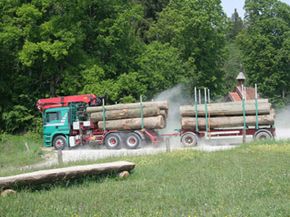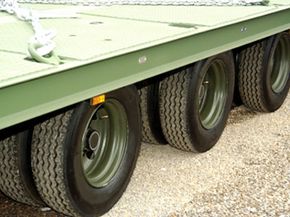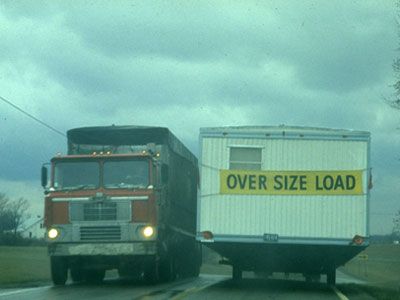We've all been there -- stuck behind a tractor trailer with what looks to be the world's largest grain silo resting heavily on the truck's 18 wheels. The driver sits staring at the suspension bridge just ahead, rifling through papers to try to determine if he can haul this heavy load across the span without collapsing it. Will he end up on the evening news or even worse -- YouTube? His reputation as a trucker is at stake and he instantly regrets his decision to veer from his pre-planned route to save a few hours. The bridge creaks and groans as the overweight load inches over the bridge -- crisis averted.
This scenario shouldn't happen. Chances are this imaginary trucker was operating outside the legal limits of where he could tow his overweight load. If he had the proper permits, he would know the regulations and restrictions for the route he'd planned. More than 500,000 overweight trucks are permitted each year in the United States [source: USA Today]. These permits range in price from $12 to $1,000, depending on the weight of your payload. If you plan on hiring a company for towing an overweight load, they'll get all the permits and details. It's what they're paid to do, so you don't have to worry about it. Unless you're moving your home though, you'll probably never be faced with an oversized load dilemma -- most of these loads come from commercial shippers.
Advertisement
Each state and each city within each state has specific rules for what constitutes an overweight load and when and where you can haul one within its boundaries. For instance, in Wisconsin an overweight load is when the maximum gross weight of the vehicle and its load exceeds 80,000 pounds (36,287 kilograms). Most interstate highways have the same 40 ton regulation. However, some states allow exceptions to that limit because of influence by lobbies from local industry. Texas allows the limit to be exceeded by as much as two tons and Nevada has permitted one-time exceptions up to 170,000 pounds (77,110 kilograms) [source: USA Today].
Advertisement



